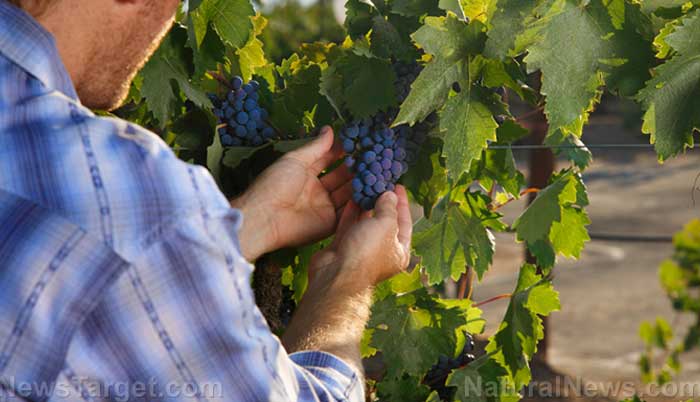![]() Home > Lifestyle
Home > Lifestyle
Grape Growers Can Increase The Nutrients In Their Wine By Removing Leaves Early, Though It Does Decrease Crop Size

![]() January 12th, 2018 | 09:55 AM |
January 12th, 2018 | 09:55 AM | ![]() 1986 views
1986 views
NATURALNEWS.COM
A recent study concerning the effects of early leaf removal on grape yield has uncovered that wine that is derived from early defoliated grapes tend to have more nutrients than those that were not. The negative side of this is, grapes that have encountered early leaf removal tend to be smaller in size.
In the study titled “Effects of early removal on grape yield, chemical characteristics, and antioxidant activity of grape variety Cabernet Sauvignon and wine from eastern Croatia”, a group of grapes had undergone leaf removal, while another group did not experience anything of the sort, during two years (2013 and 2014).
The study resulted in the conclusion that early leaf removal in grapes that are grown in the eastern continental part of Croatia can result in the production of smaller quantity yet higher quality Cabernet Sauvignon red wine that is chock full with anthocyanins.
The bunch rot disease and how early leaf removal can help combat it
Bunch rot disease develops in crops especially when there is frequent rainfall and high humidity during the rainfall period, which is commonly experienced in Pennsylvania and other parts of the eastern United States. Also, ripening generally happens within the same time as the hurricane season, which is characterized by abundant rainfall and cloud cover throughout the eastern seaboard region at that time.
Research has also shown that the compactness of grape clusters contribute to bunch rot susceptibility – the more compact a grape cluster, the more possible rot is to develop in that cluster and the more likely it is to spread quickly throughout the cluster.
Berry cuticle, which is recognized as a good pathogen barrier, was found to be thicker among berries grown in looser clusters with less berry-t0-berry contact. Bloom “trash”, a mixture of caps, stamens, and flowers that can act as a substrate for bunch rot pathogens after bloom, is less likely to be retained inside loose clusters. Loose clusters also boost pesticide spray penetration.
Usually, farmers use fungicides to control bunch rot disease. However, sometimes fungicides don’t make much of a dent when it comes to addressing the proliferation and growth of Botrytis cinerea, which is the predominant cause of late-season bunch rots. Also, farmers have started becoming increasingly conscientious regarding the reduction of chemical inputs in agriculture.
In 2001, the Lake Erie Regional Grape Research and Extension Center studied the role that cluster compactness played in bunch rot development in Vignoles and found out that cluster loosening methods, such as early leaf removal, increased the effectiveness of nunch rot control programs.
Studies conducted in commercial vineyards in southern Pennsylvania in 2010 and 2011 yielded the same results.
Source:
courtesy of NATURALNEWS
by Jhoanna Robinson
If you have any stories or news that you would like to share with the global online community, please feel free to share it with us by contacting us directly at [email protected]